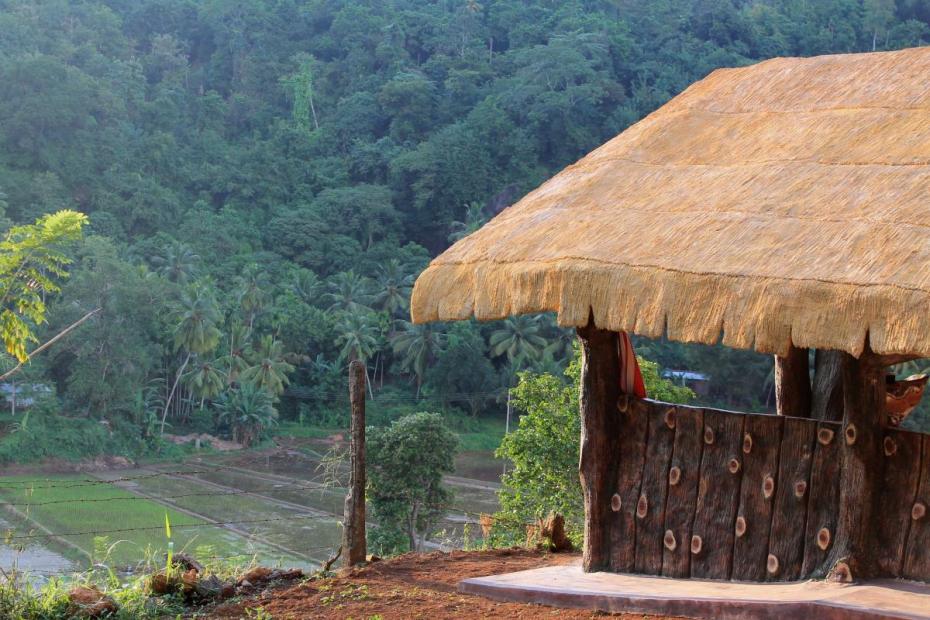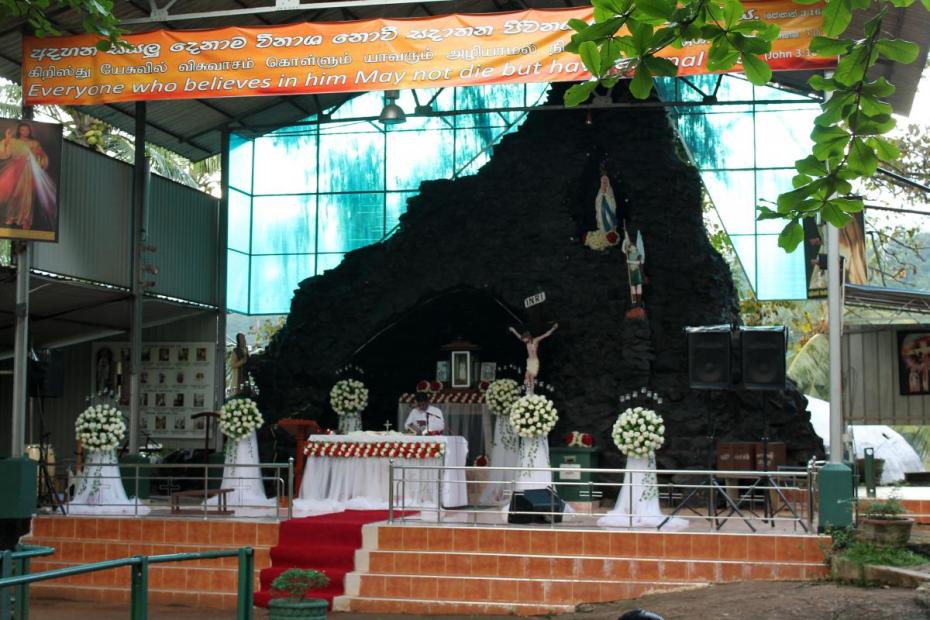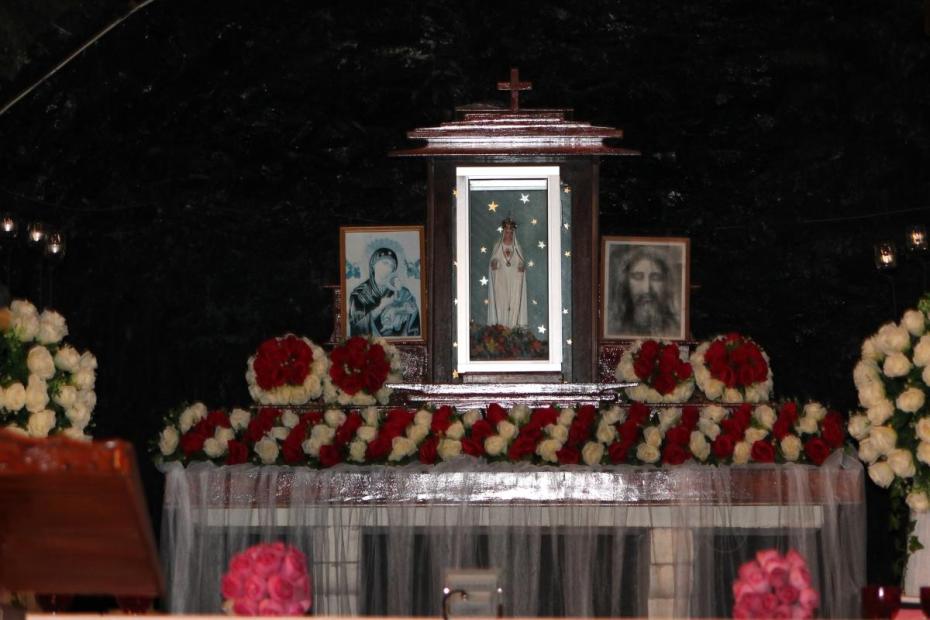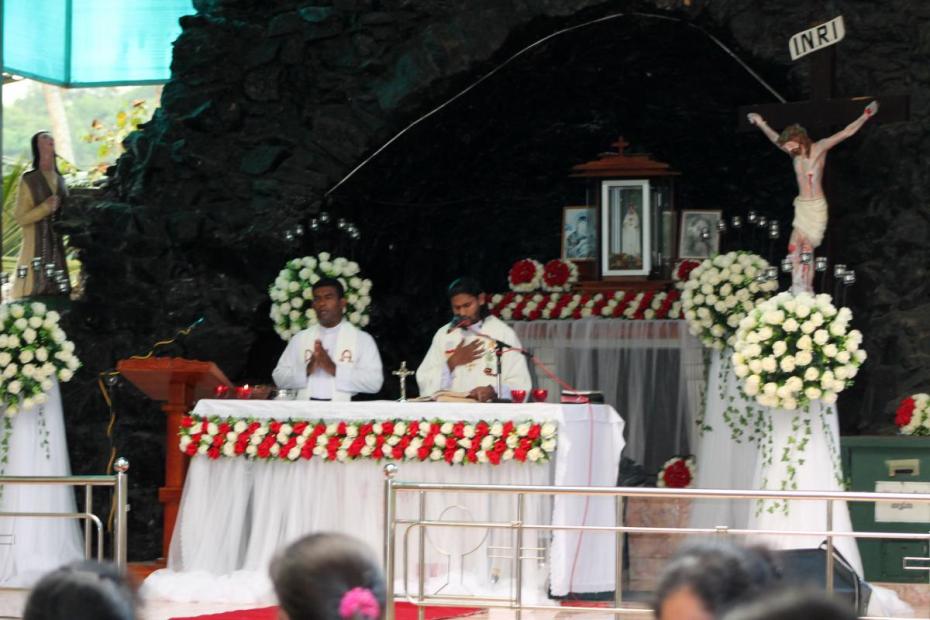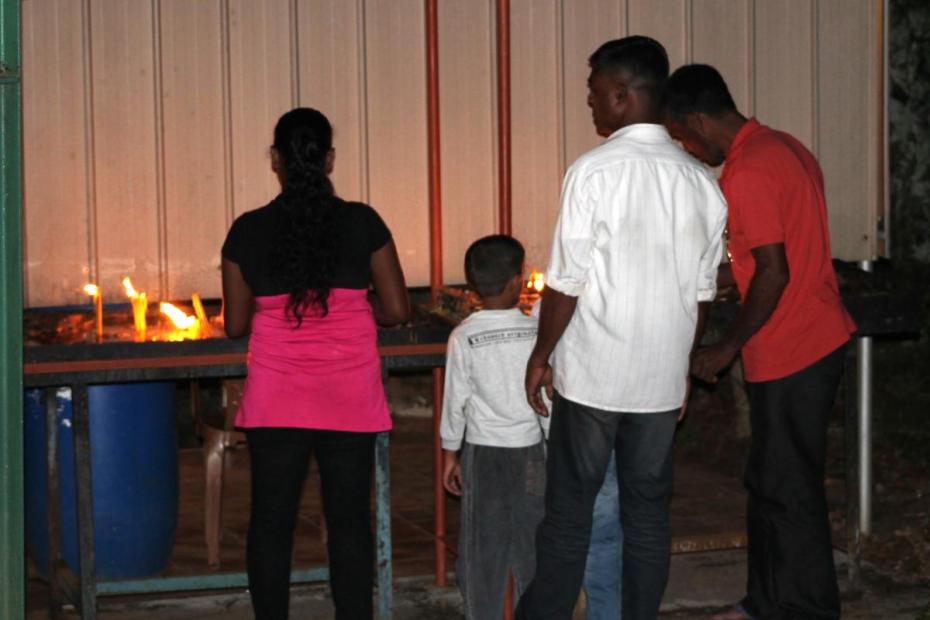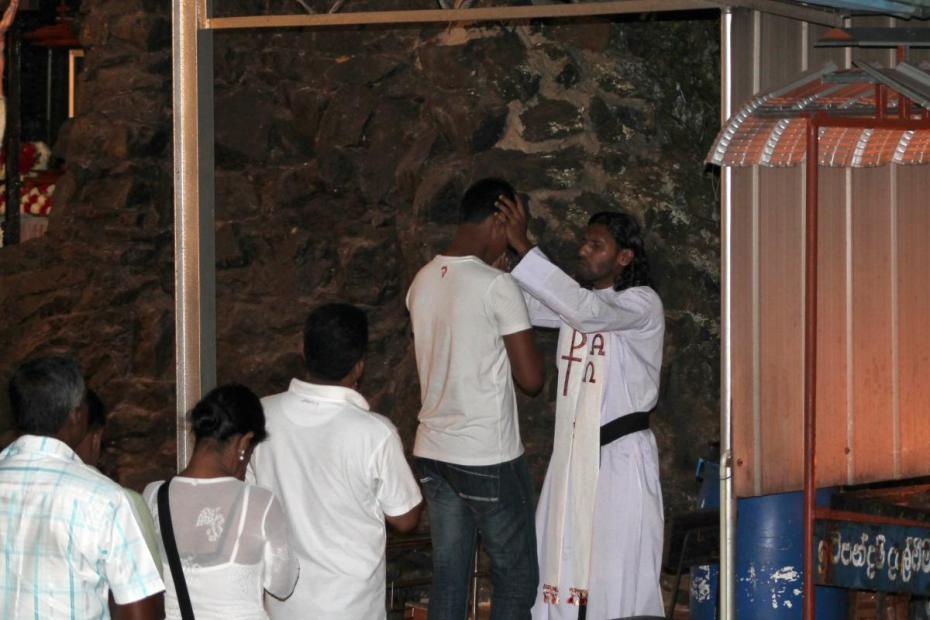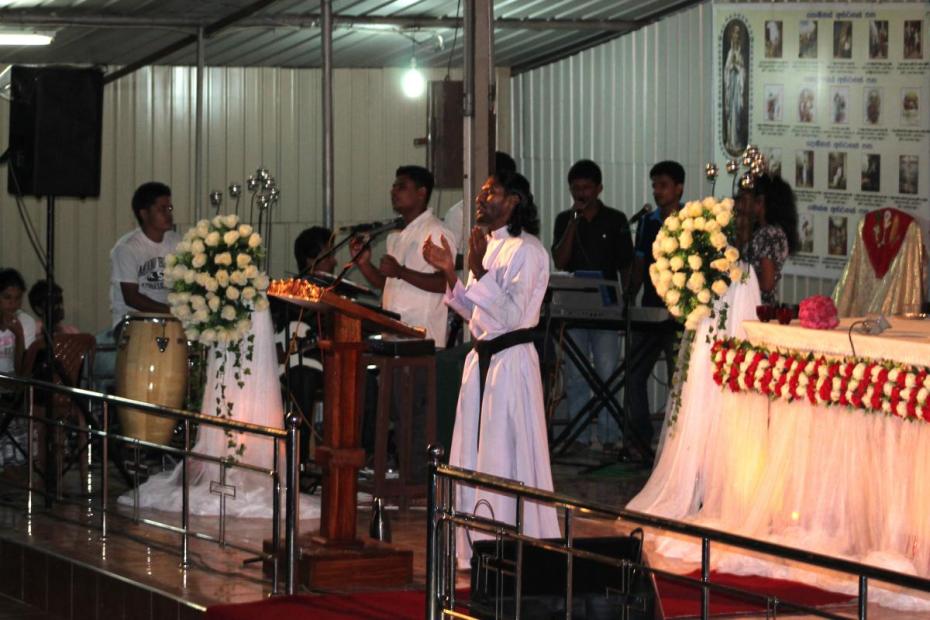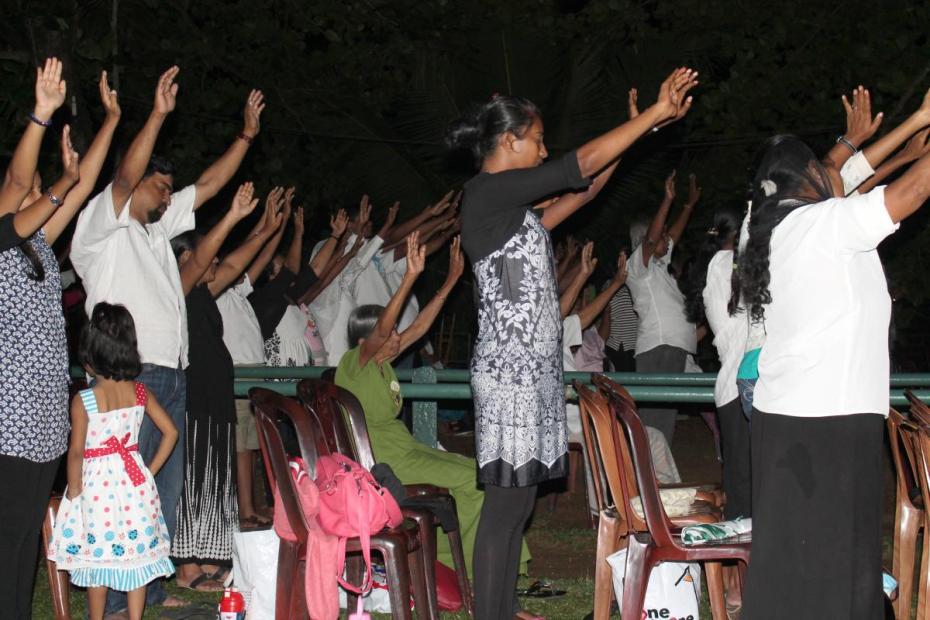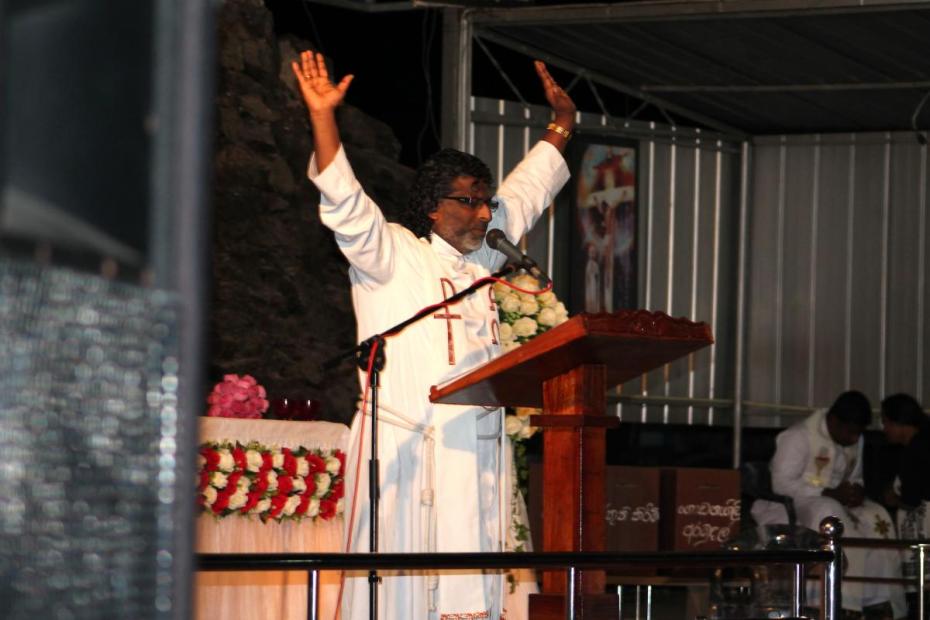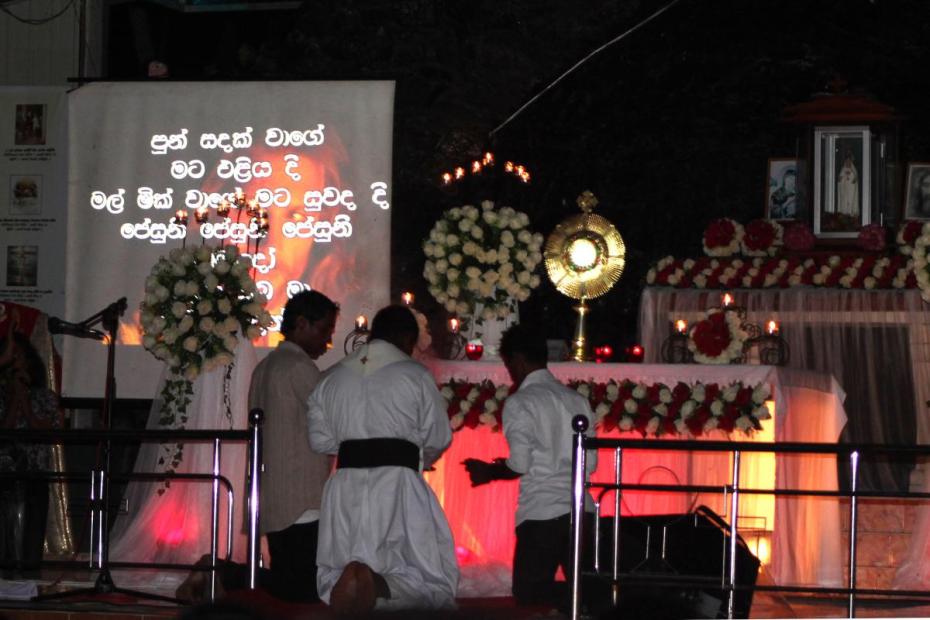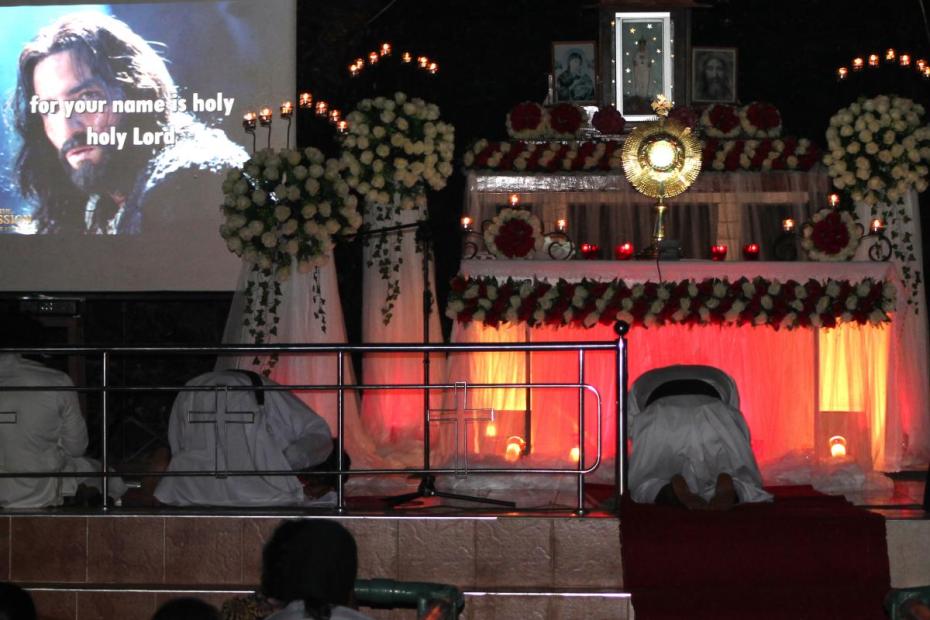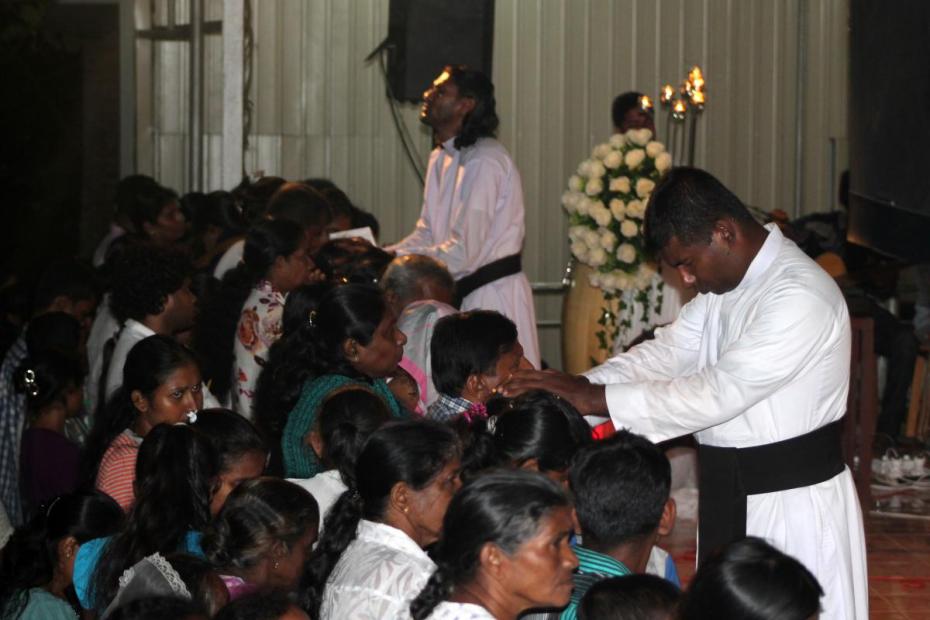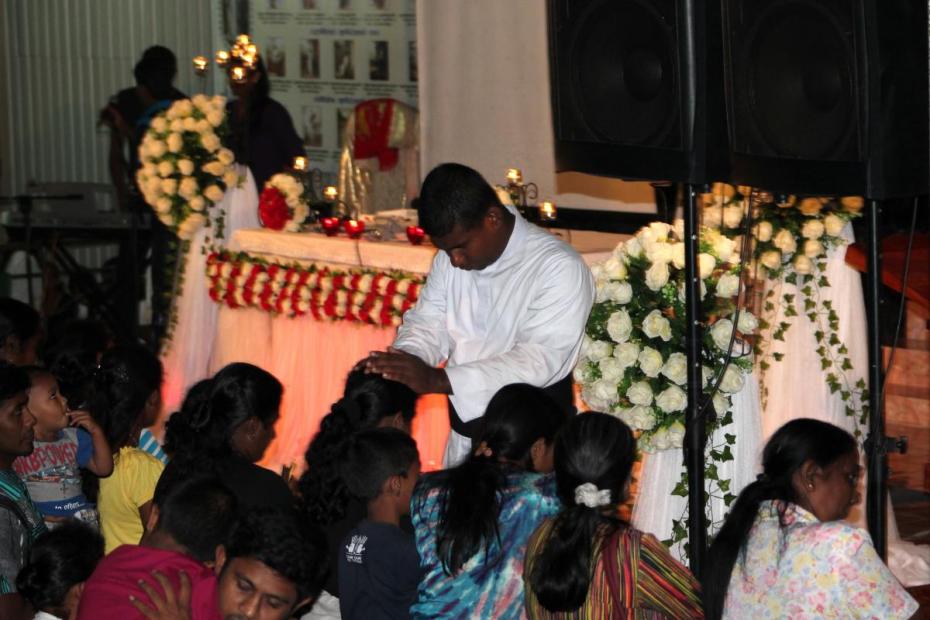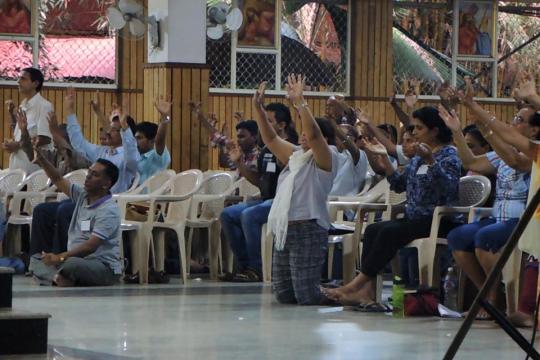Kudagama is a village that lies in the Suabaragamuva Province, near the city of Rambukkana and northwest of Sri Lanka’s second largest city, Kandy. Robert Stirrat, in his masterful Power and Authority in a Post-Colonial Setting, traces the history of the Kudagama shrine from 1910 when a Catholic church was first built in the village. As Stirrat relates, an Italian missionary priest who resided at Kudagama claimed possession of a relic from Christ’s Crown of Thorns. The relic was kept in the mission house at Kudagama until the early 1970s, when Fr. Camilius Jayamanne arrived and began using the Thorn for exorcisms. Kudagama soon became a center for healing and has retained its importance ever since.
The successor of Fr. Jayamanne is Fr. Jeewantha Peiris, who had a particularly profound experience at the Potta Retreat Center in Kerala before he entered into this ministry. Fr. Peiris has expanded the Kudagama Shrine, most recently overseeing the construction of an anatomically detailed womb-like chapel for adoration and charismatic prayer to complement the adoration hut that looks over the rice fields surrounding Kudagama. Fr. Peiris walks barefoot throughout Kudagama, believing that God has specially incarnated himself in earth and soil of the shrine.
The healing service is far more structured than in Fr. Jayamanne’s time and the healing power of the priest is emphasized. Healing services take place in a large compound with a grotto and altar. The service begins with Mass and then moves to prayer and thanksgiving. Interspersed throughout the Sinhalese hymns and ejaculative prayers are testimonies of healing from laypeople who have been invited to speak. There are musicians and a choir, and throughout the service stills from the Passion of the Christ are broadcast on a screen to the side of the altar. Services are rather subdued compared to other charismatic services in South Asia: few people are “slain by the spirit” and very few speak in tongues. The emphasis instead is preparation for healing as a quasi-sacramental act that relies upon the intercession of the priest. During the service, congregants go to a priest to confess their sins. The service builds from sermons explicating gospel narratives to Eucharistic adoration, during which the priests prostrate themselves before a monstrance and speak into the microphone what are understood to be inspired and prophetic utterances, alternating between Sinhala and English, but not progressing to glossolalia. A final “laying on of hands” culminates the healing rituals. After this final rite, pilgrims share rice and curry, sandwiches and coffee with one another as a sign of community and solidarity.
In addition to being a shrine and place for healing, Kudagama is also a retreat center that often welcomes both adult and youth parish groups, which have traveled from the Catholic belt down by the coast. Like many other church shrines in Sri Lanka, Kudagama has an outdoor Stations of the Cross pilgrimage area. Kudagama is about one hour south of the Buddhist holy city of Kandy and lies under the jurisdiction of the Ratnapura diocese.
Further Reading
Robert Stirrat, Power and Authority in a Post-Colonial Setting, Cambridge: Cambridge University Press, 1992.
